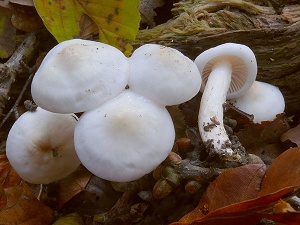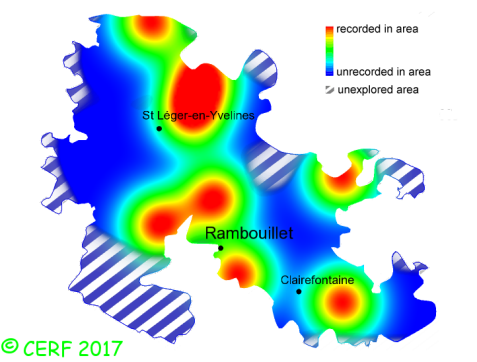| Hygrophorus cossus (Sowerby) Fr. |
|
|
|
|
|
|
The cap is white then yellowing to orange-red brown. The cap surface is smooth, viscid or sticky. The stem is white, without ring. The flesh is white, unchanging; its taste is mild or of Jerusalem artichoke; the odour is of goat moth, or artichoke being cooked; its texture is fibrous. The gills are white, turning yellow, decurrent, distant (nb of gills per 90° ~ 14 ). The spore print is white. This species is mycorrhizal. It grows on the ground, on a rather calcareous soil, with beech. The fruiting period takes place from August to November.
Chemical tests : Stem flesh becomes chrome-yellow when in contact with potash. Distinctive features : odour of cooked shrimps; gills easily separated from the cap; cap not reacting to potash, unlike the base of stem Hygrophorus cossus is quite rare and scattered in the forest of Rambouillet, and is occasional, more generally speaking . | ||
|
page updated on 14/01/18

